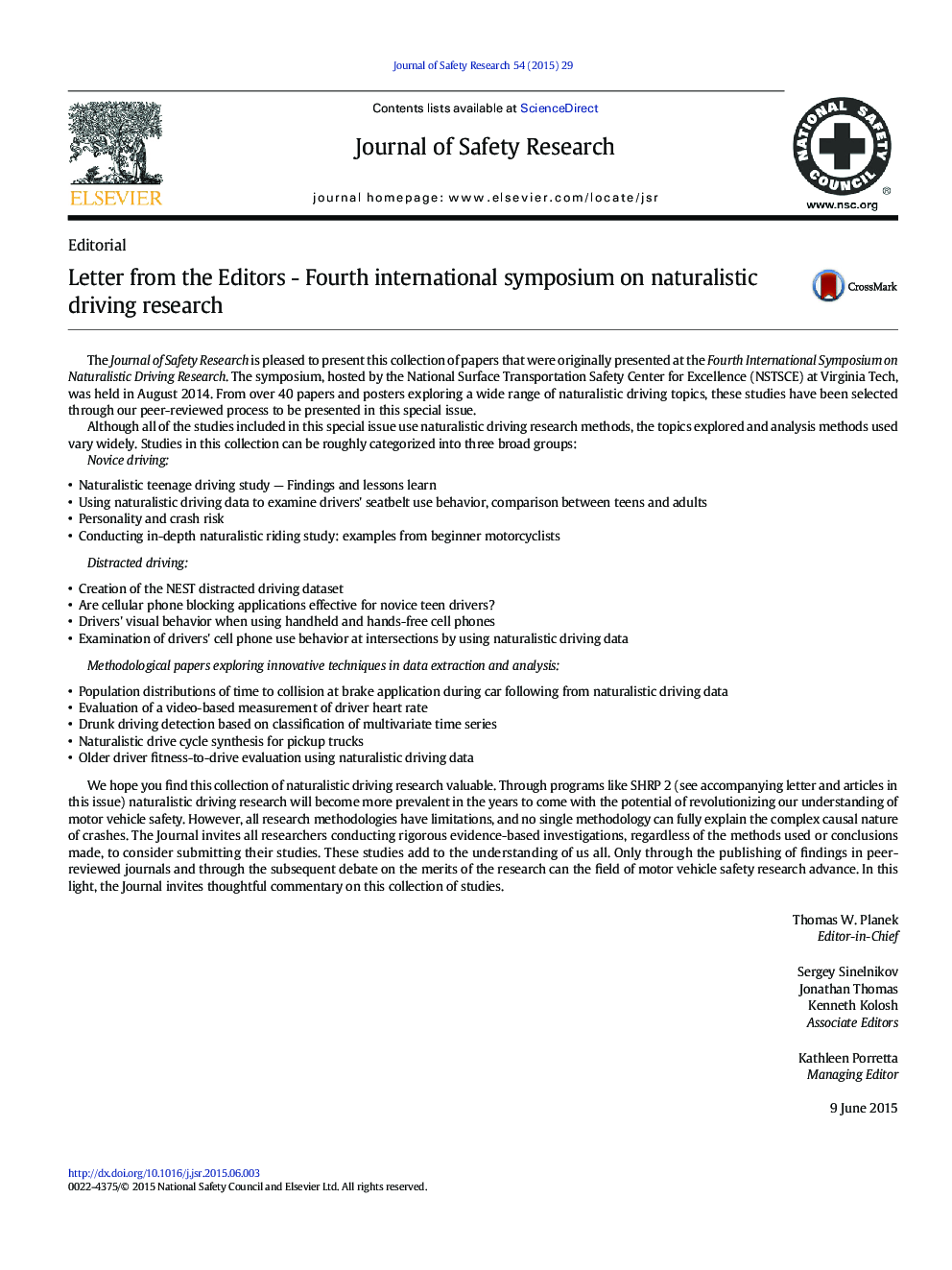| Article ID | Journal | Published Year | Pages | File Type |
|---|---|---|---|---|
| 587295 | Journal of Safety Research | 2015 | 65 Pages |
•Naturalistic driving study provides a way to examine safety from both driver behavior and situational factors aspects.•Drivers' adaptation/self-regulated behavior while using a cell phone was examined by reducing speed.•Traffic and lighting conditions showed significant impact on driving speed.
IntroductionMany driving simulator studies have shown that cell phone use while driving greatly degraded driving performance. In terms of safety analysis, many factors including drivers, vehicles, and driving situations need to be considered. Controlled or simulated studies cannot always account for the full effects of these factors, especially situational factors such as road condition, traffic density, and weather and lighting conditions. Naturalistic driving by its nature provides a natural and realistic way to examine drivers' behaviors and associated factors for cell phone use while driving.MethodIn this study, driving speed while using a cell phone (conversation or visual/manual tasks) was compared to two baselines (baseline 1: normal driving condition, which only excludes driving while using a cell phone, baseline 2: driving-only condition, which excludes all types of secondary tasks) when traversing an intersection.ResultsThe outcomes showed that drivers drove slower when using a cell for both conversation and visual/manual (VM) tasks compared to baseline conditions. With regard to cell phone conversations, drivers were more likely to drive faster during the day time compared to night time driving and drive slower under moderate traffic compared to under sparse traffic situations. With regard to VM tasks, there was a significant interaction between traffic and cell phone use conditions. The maximum speed with VM tasks was significantly lower than that with baseline conditions under sparse traffic conditions. In contrast, the maximum speed with VM tasks was slightly higher than that with baseline driving under dense traffic situations.Practical applicationsThis suggests that drivers might self-regulate their behavior based on the driving situations and demand for secondary tasks, which could provide insights on driver distraction guidelines. With the rapid development of in-vehicle technology, the findings in this research could lead the improvement of human-machine interface (HMI) design as well.
